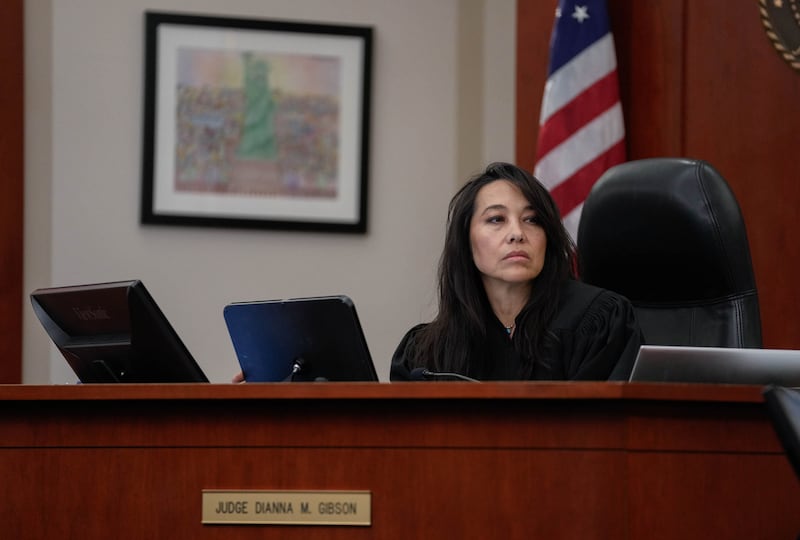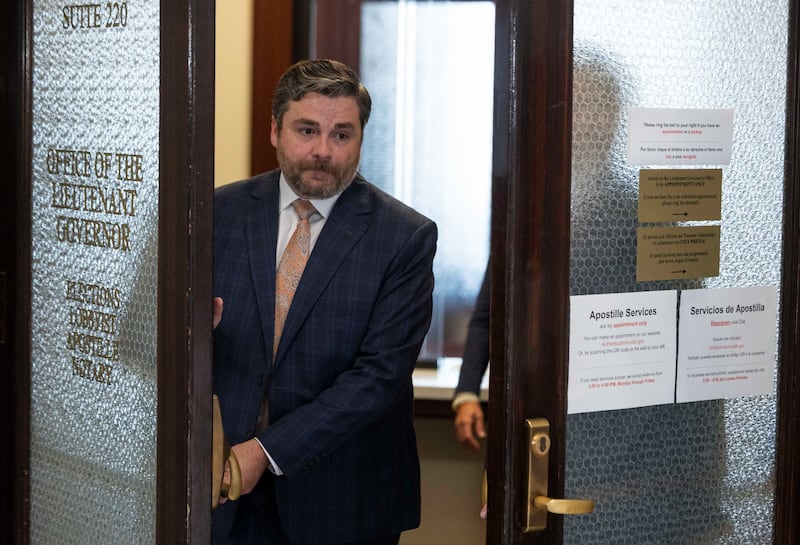The state Republican Party shifted tactics for repealing a 2018 ballot initiative on redistricting standards on Friday, after court challenges threatened to block an earlier application to overturn the law.
The Utah Republican Party started an effort to roll back Proposition 4 earlier this month by filing for an indirect initiative, which, if it cleared the signature threshold of about 70,000, could force the Legislature to vote on whether the law should stay in place.
Instead, the party filed paperwork with the Elections Office on Friday withdrawing that application and asking to move forward with a direct initiative, which would put the question to the voters next year if organizers can clear a higher signature threshold of about 140,000.
The application was filed by Utahns for Representative Government, a political issues committee organized by Utah Republican Party Chairman Rob Axson. It was signed by the six sponsors of the original initiative — Axson, Utah Attorney General Derek Brown, former U.S. Rep. Rob Bishop, Republican National committeeman Brad Bonham, Cody Stewart and Carolyn Phippen — along with Utah Sen. Mike Lee and several others.
Lee’s signature was notarized in Palm Beach County, Florida, where President Donald Trump’s Mar-a-Lago club is located.
“While we would have preferred to continue under the process provided by law, the time required to defend our rights and appeal flawed judicial decisions would have made it impossible to meet statutory deadlines,” Utahns for Representative Government said in a statement Friday. “The Utah Constitution is clear: The authority to draw congressional districts rests with the people’s elected representatives — not with the courts and not with an unaccountable commission.”
The effort to overturn Proposition 4 prompted a new legal complaint from plaintiffs already engaged in yearslong litigation over the state’s congressional maps. The plaintiffs sought an injunction to block the indirect initiative.
In its press release, Utahns for Representative Government wrote that those court filings “made it clear that the lieutenant governor’s office would likely be forced to deny the indirect initiative application.”
“For those who claim to believe in the initiative process, they should welcome our effort. The only difference is that our initiative restores the constitutional order that Proposition 4 disrupted,” Axson said.
Better Boundaries, the group behind Proposition 4, celebrated the GOP’s change in tactics as a temporary success.
“Once again, political insiders’ attempts to undermine the people’s voice and repeal Proposition 4 have fallen flat, at least for now,” said Elizabeth Rasmussen, the group’s executive director. “This is a win in our ongoing fight to give Utahns the reforms they voted for in 2018.”
Public meetings on the indirect initiative that had previously been scheduled across the state on Saturday have been canceled, and public hearings on the new direct effort will be held Nov. 3.

Hearings continue in redistricting lawsuit
Lawyers for the state Legislature on Friday argued the case for the new congressional map enacted earlier this month during the second day of a lengthy hearing to determine which map will be in place for next year’s elections.
As with the hearing a day prior, the majority of the discussion at the Matheson Courthouse in Salt Lake City centered around statistical tests used to determine the fairness of proposed redistricting maps, with three experts hired by the Legislature testifying that the tests adopted by lawmakers are valid ways to determine if the new map meets the standards outlined by Proposition 4.
Third District Judge Dianna Gibson adjourned Friday’s hearing without making a decision, but one is expected soon as Lt. Gov. Deidre Henderson said any new map must be in place by Nov. 10 in order to be used in next year’s midterm elections. A hearing date had been set for early November to consider the request to block the GOP’s initiative to undo Proposition 4, and attorneys for the plaintiffs said they would review the changes to see whether that hearing is still necessary.
Utah’s redistricting saga kicked into overdrive in August, when Gibson ruled that the current maps are unconstitutional and told lawmakers to redraw the maps in line with Proposition 4, a 2018 ballot initiative creating an independent redistricting commission and several standards for congressional maps.
Experts debate how to measure partisan fairness
When state lawmakers approved a remedial map earlier this month, they also passed a bill codifying several tests to evaluate new maps. Proposition 4 prohibits using any partisan data to draw maps, but it directs lawmakers to select “judicial standards and the best available data and scientific and statistical methods, including measures of partisan symmetry” to be applied after the fact.
Lawmakers set three measures: the partisan bias test, the ensemble analysis test and the mean-median difference test. Experts hired by the plaintiffs spent much of Thursday criticizing the partisan bias test and mean-median test as measures of partisan symmetry in Utah given the state’s small number of congressional districts and unbalanced partisan lean in statewide elections.
They suggested several measures they said would better capture whether any map unduly favors a certain political party, including the efficiency gap test.
Lawyers for the Legislature presented their case on Friday, with several of their own academics pushing back on criticisms by the plaintiffs. They said the map adopted by lawmakers falls within the normal bounds based on thousands of simulations.
Asked what the efficiency gap test would reveal about the partisan symmetry of a proposed map, Jonathan Katz, a political science and statistics professor at the California Institute of Technology, said, “nothing.”
“Under no circumstances does the efficiency gap measure partisan symmetry,” he said while being cross examined.
Other researchers cast doubt on the efficiency gap’s ability to measure partisan symmetry in Utah, and a professor of political science at Brigham Young University said he ran all three proposed maps — one passed by lawmakers and two submitted by plaintiffs — through five different partisan fairness measures, and said Map C approved by the Legislature is the only one that passed each measure.
“Overall, using the methods the statute names as well as those requested by plaintiffs, (Map C) is not a partisan outlier nor shows signs of undue political favoritism to one political party,” Michael Barber wrote in his expert report to the court.
Sean Trende, senior elections analyst at RealClearPolitics, who was hired by lawmakers to evaluate new maps as they were drawn and eventually generated the five maps lawmakers considered, said he dislikes partisan fairness measures for the precise reason both parties were in court Friday.
“I generally don’t like them in part because … some of it’s philosophical,” he said. “I think that when you have districts, it’s really the way the districts are drawn that’s more important. … Part of it is that these partisan symmetry measures always devolve into the type of fight we’re having here. Which version do you use? How do you measure it? What races do you use? It just becomes a mess.”
Trende said he could actually foresee Democrats winning up to two districts under the new plan, depending on which candidates they run.
“Wow, if the Democrats run Ben McAdams in one and Evan McMullin in another, they’re going to have half the delegation,” he recalled thinking after he saw the partisan breakdown of Map C.
On cross-examination, attorneys pushed back on the statistical analyses done by some of the experts, and questioned Trende’s credentials after judges in similar cases have previously discounted his expert testimony.
They also questioned Trende after he said he used an online tool called Dave’s Redistricting to draw the maps he submitted to lawmakers. Sen. Scott Sandall, R-Tremonton, had previously criticized the tool for having access to partisan data, and plaintiff’s attorneys pressed Trende over whether he viewed partisan information in drawing the maps.
Trende said he didn’t recall changing any of the settings that would have displayed racial data or other election statistics while the maps were drawn.
Contributing: Courtney Johns

